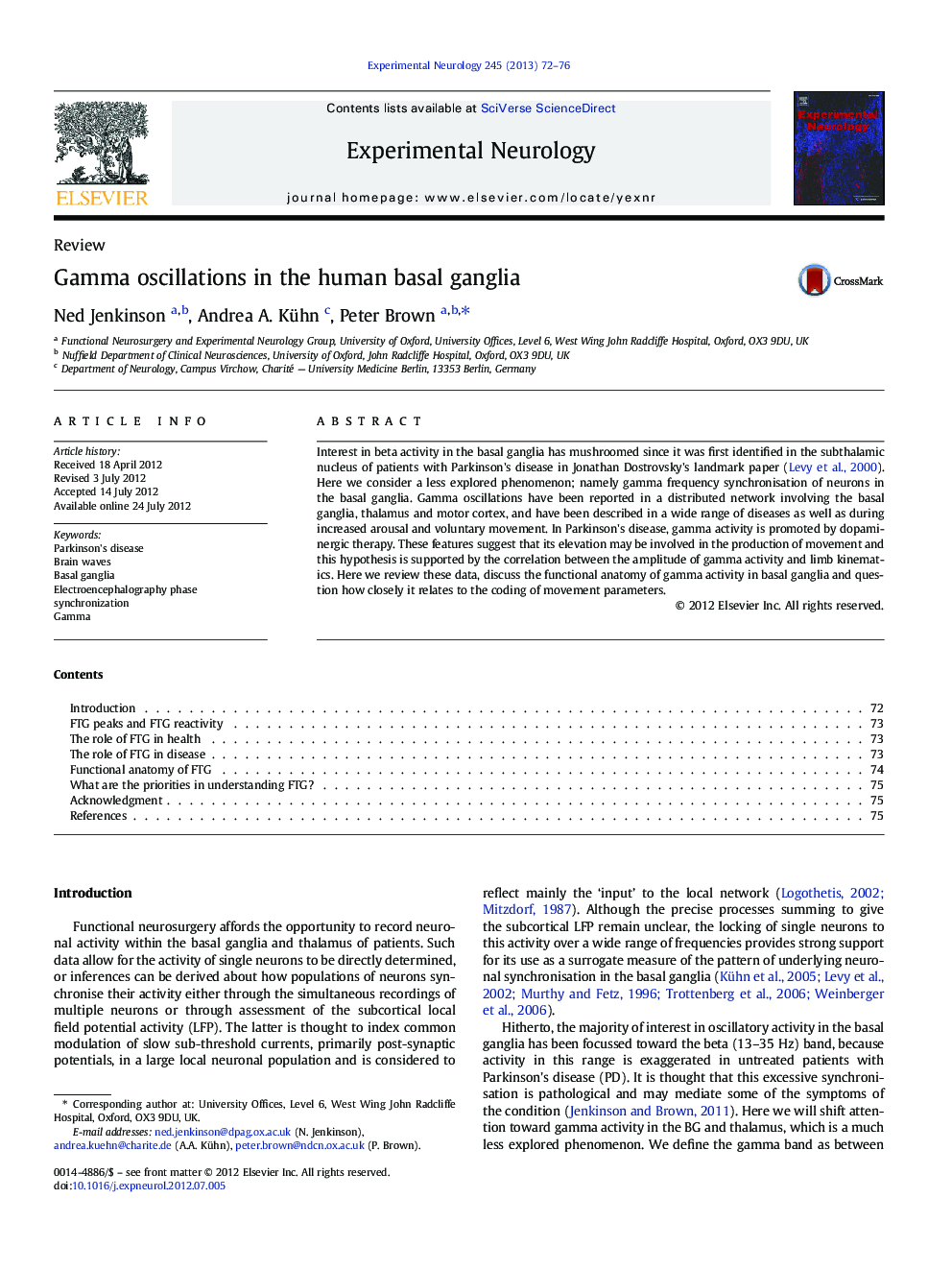| Article ID | Journal | Published Year | Pages | File Type |
|---|---|---|---|---|
| 3055579 | Experimental Neurology | 2013 | 5 Pages |
Interest in beta activity in the basal ganglia has mushroomed since it was first identified in the subthalamic nucleus of patients with Parkinson's disease in Jonathan Dostrovsky's landmark paper (Levy et al., 2000). Here we consider a less explored phenomenon; namely gamma frequency synchronisation of neurons in the basal ganglia. Gamma oscillations have been reported in a distributed network involving the basal ganglia, thalamus and motor cortex, and have been described in a wide range of diseases as well as during increased arousal and voluntary movement. In Parkinson's disease, gamma activity is promoted by dopaminergic therapy. These features suggest that its elevation may be involved in the production of movement and this hypothesis is supported by the correlation between the amplitude of gamma activity and limb kinematics. Here we review these data, discuss the functional anatomy of gamma activity in basal ganglia and question how closely it relates to the coding of movement parameters.
► Finely-tuned gamma oscillations are associated with increased arousal. ► Finely-tuned gamma is phasically increased in the contralateral basal ganglia thalamo-cortical circuit during movement. ► Finely-tuned gamma levels at any given instant might determine response vigour.
